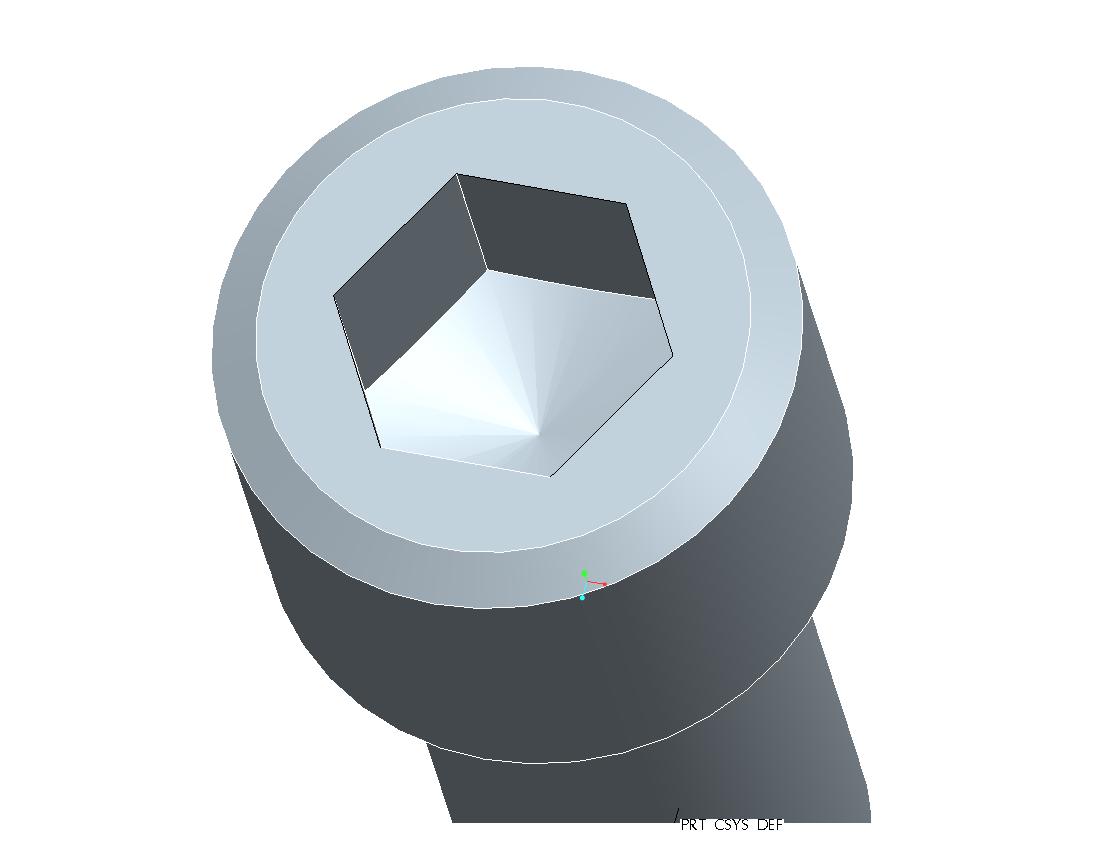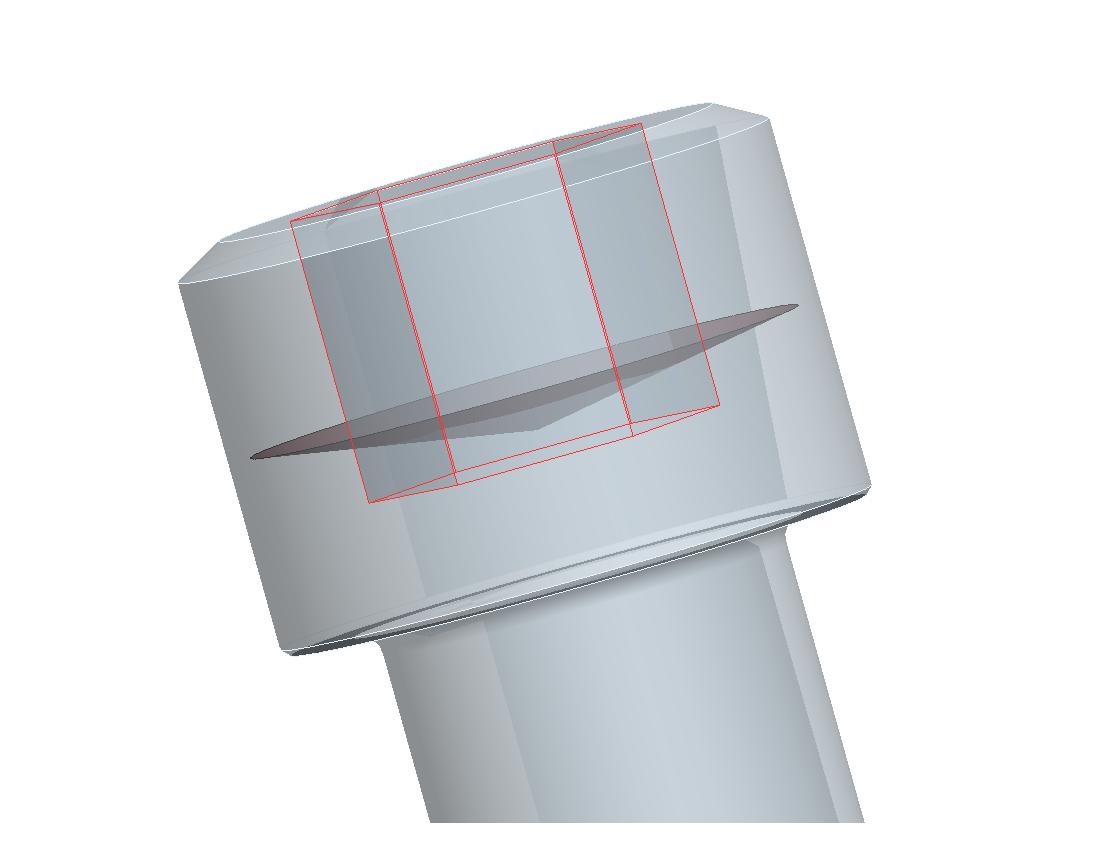Community Tip - Visit the PTCooler (the community lounge) to get to know your fellow community members and check out some of Dale's Friday Humor posts! X
- Community
- Creo+ and Creo Parametric
- 3D Part & Assembly Design
- How do I model the inside of a socket head cap scr...
- Subscribe to RSS Feed
- Mark Topic as New
- Mark Topic as Read
- Float this Topic for Current User
- Bookmark
- Subscribe
- Mute
- Printer Friendly Page
How do I model the inside of a socket head cap screw?
- Mark as New
- Bookmark
- Subscribe
- Mute
- Subscribe to RSS Feed
- Permalink
- Notify Moderator
How do I model the inside of a socket head cap screw?
The socket head cap screw that I have here is a 1/4-20 UNC and measures .45 inches long, there are threads the full length. The inside of the hexagon, at the bottom, there is a conical cut that ends at a point and it blends with the hexagon. How do they manufacture this?
Regards,
John
This thread is inactive and closed by the PTC Community Management Team. If you would like to provide a reply and re-open this thread, please notify the moderator and reference the thread. You may also use "Start a topic" button to ask a new question. Please be sure to include what version of the PTC product you are using so another community member knowledgeable about your version may be able to assist.
- Labels:
-
General
- Mark as New
- Bookmark
- Subscribe
- Mute
- Subscribe to RSS Feed
- Permalink
- Notify Moderator
Go on Mcmastercarr.com and download the model, then just modify the length to whatever you need. Much easier.
- Mark as New
- Bookmark
- Subscribe
- Mute
- Subscribe to RSS Feed
- Permalink
- Notify Moderator
John,
It's true, as Christian says, that you don't have to model socket head cap screws if you don't want to; they're available in webspace. However, your question wasn't answered, and maybe you have good reason to create such a detailed model. (Frankly, most folks just sink a hex cut with a flat bottom, and don't worry about that conical surface which is created by a heading operation.) Anyway, here you go. Create a hex Surface going deeper than it will end up and a revolved conical surface going well beyond the hex. Now Merge the 2 Surfaces and Edit/Solidify to cut out the material. Good luck!
David

- Mark as New
- Bookmark
- Subscribe
- Mute
- Subscribe to RSS Feed
- Permalink
- Notify Moderator
David,
When you created the revolved conical cut, did you create it at the bottom surface of the extruded hex?
Regards,
John
- Mark as New
- Bookmark
- Subscribe
- Mute
- Subscribe to RSS Feed
- Permalink
- Notify Moderator
John,
No, the advantage of using intersecting (and crossing!) surfaces is that they can be completely independent of each other when individually created, then merged afterwards. In other words, the revolved conical suface goes beyond the hex extruded surface and vice versa.
David
- Mark as New
- Bookmark
- Subscribe
- Mute
- Subscribe to RSS Feed
- Permalink
- Notify Moderator
Socket head cap screws are pressed.
But there is a way to dril square/hexagon holes even.
http://www.youtube.com/watch?v=PMSbdhQM9GU&feature=related
Modeling this is with a few steps first u cut conical inside material then u cut hexagonal hole with extrude from surface to circular surface of conical cut.You make sure your hex sketch is inscribed in conus. And then to complete hex conus transition you use same hex sketch but this time you add material outside of hex cut. kinda hard to put in words so here are few pics.

Your post is little bit confusing. Title ask how to model and in post u ask how its made.
- Mark as New
- Bookmark
- Subscribe
- Mute
- Subscribe to RSS Feed
- Permalink
- Notify Moderator
Hi Davor,
Is there a second cut that is created after the hexagon cut that is extruded up to the surface of the revolved conical cut?
Regards,
John
- Mark as New
- Bookmark
- Subscribe
- Mute
- Subscribe to RSS Feed
- Permalink
- Notify Moderator
Yes,
you use same hex sketch but this time you add material outside of hex cut using thickness.





